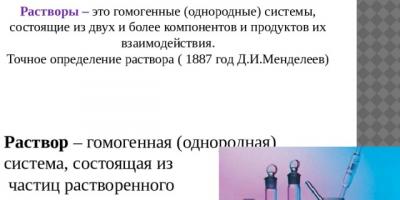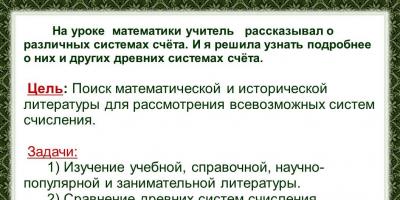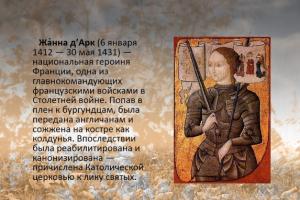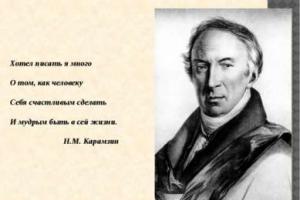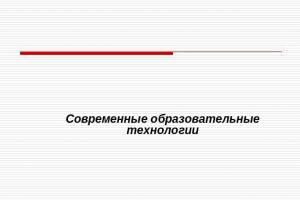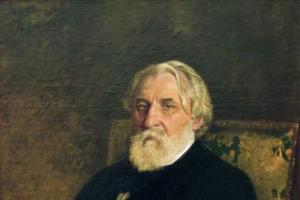Topic: Topic: How people counted in the old days and how they wrote numbers Author - Erdnieva Rayana Narmaevna, 7th grade student Erdnieva Rayana Narmaevna Head - Ulyumdzhieva Natalya Badmaevna, tel, Republic of Kalmykia Yustinsky district village Tsagan Aman lane. Shkolny, 6 MBOU "Tsaganaman Gymnasium", tel.
During a math lesson, the teacher talked about different counting systems. And I decided to learn more about them and other ancient counting systems. Goal: Search for mathematical and historical literature to consider all kinds of number systems. Objectives: 1) Studying educational, reference, popular science and entertaining literature. 2) Comparison of ancient number systems. 3) Familiarization with the use of ancient number systems in modern times.

How people learned to count They learned to count back in time immemorial. At first, people distinguished between just one object or many. It took a long time for the number two to appear. Counting in pairs is very convenient, and it is no coincidence that some tribes of Australia and Polynesia, until very recently, had only two numerals: one and two. And all numbers greater than two received names in the form of combinations of these two numerals. For example: three-one and two, four-two and two, two and one, etc.

The most ancient and simple “counting machine” has long been the fingers and toes. And even in our time they still use this “counting device”, which is always with us. You can solve examples not only within ten on your fingers. In ancient times, people walked barefoot. Therefore, they could use their fingers and toes to count. Thus, they could seemingly only count to twenty. But with the help of this “barefoot machine” people could achieve much larger numbers, since they actually used the base-20 number system: 1 person is 20, 2 people are two times 20, etc.

The 20-digit system of the ancient Mayans The ancient Mayans used a 20-digit number system, or counting. Why exactly the number 20, along with one, became the basis of their counting, is now impossible to establish with sufficient reliability. But simple logic comes to the rescue. It suggests that, most likely, man himself was for the ancient Mayans that ideal mathematical model, which they took as a unit of calculation. Indeed, what could be more natural and simpler, since nature itself “divided” this unit of “counting” into 20 units of the second order according to the number of fingers and toes?

The ancient Mayans wrote down digital signs, not horizontally, but vertically, from bottom to top, as if building a kind of bookcase of numbers. Since counting was in decimal, each initial number in the next highest position, or order, was twenty times larger than its neighbor on the bottom shelf of the “Mayan bookcase” (if the Mayans had used the decimal system, the number would not have been twenty times larger, but only ten times). On the first shelf there were units, on the second twenty, etc. At first, the Mayans used hieroglyphic symbols to represent numbers:

Then they began to write down their digital signs in the form of dots and dashes, and a dot always meant units of a given order, and a dash meant fives

On a slab discovered in the state of Verascus (Mexico), Mayan numbers are written using dots and dashes. After restoration of the slab, it was possible to read that these numbers mean 7 periods of 400 “years”, plus 16 periods of 20 “years”, plus 6 “years” of 360 days each, plus 16 “months” of 20 days each, plus 18 days .


Ancient Egyptian Decimal System The ancient Egyptian number system, which arose in the second half of the third millennium BC, used special numerals to represent numbers. Numbers in the Egyptian number system were written as combinations of these digits, in which each of them was repeated no more than nine times. The ancient Egyptians wrote the number 345 as follows:

Moscow papyrus The Moscow papyrus is the most ancient monument of Egyptian mathematics (c. BC). It was acquired in 1893 by the Russian collector Vladimir Semenovich Golenishchev (). Since 1912, it has been kept in Moscow, in the Museum of Fine Arts. Pushkin. The size of the papyrus is 544x8 cm. It contains solutions to 25 problems.

The Rhind Papyrus was compiled around BC. scribe Ahmes. Acquired by the English collector Heinrich Rhind in 1858 and kept, like the Leather Scroll, in the British Museum. Its dimensions are 544x33 cm. It contains 84 problems. It is a summary of the scribe-teacher Ahmes. Rhind's Papyrus

Babylonian sexagesimal system Unlike the Egyptian one, the Babylonian system used only 2 symbols: a straight wedge to indicate units and a reclining wedge for tens. To determine the value of a number, you need to divide the image of the number into digits from right to left. A new discharge begins with the appearance of a straight wedge after a recumbent one. Let's take the number 32 as an example:

The number 60 was again denoted by the same sign as 1. Therefore, the Babylonian number system was called sexagesimal. Babylonian clay tablet with notes. The Babylonian scientist imagined the number 137 as follows: 2 sixties + 17 units = 137. The Babylonian sexagesimal system is the first number system, partially based on the positional principle. This number system is still used today, for example, when determining time, an hour consists of 60 minutes, and a minute consists of 60 seconds.

Roman number system The ancient Romans used numbering, which remains to this day under the name "Roman numbering", in which numbers are represented by letters of the Latin alphabet. Methods for determining the value of a number: The value of a number is equal to the sum of the values of its digits. For example, the number 32 in the Roman numeral system looks like XXXII=(X+X+X)+(I+I)=30+2=32 1. If to the left of the larger digit there is a smaller one, then the value is equal to the difference between the larger and smaller digits . At the same time, the left digit can be less than the right one by a maximum of one order of magnitude: for example, only X(10) can be in front of L(50) and C(100) among the “minor” ones, and only C can be in front of D(500) and M(1000) (100), before V(5) only I(1); the number 444 in the number system under consideration will be written in the form CDXLIV = (D-C)+(L-X)+(V-I) = = The value is equal to the sum of the values of groups and numbers that do not fit into points 1 and 2.

There is no reliable information about the origin of Roman numerals. In Roman numbering, traces of the fivefold number system are clearly visible. In the language of the Romans, there are no traces of the fivefold system. This means that these numbers were borrowed by the Romans from another people (most likely the Etruscans). This numbering prevailed in Italy until the 13th century, and in other Western European countries until the 16th century. In St. Petersburg there is a monument to Peter I. On the granite pedestal of the monument there is a Roman numeral: MDCCLXXXII = * = 1782. This is the year of the opening of the monument. Roman numerals have been used for a very long time. Even 200 years ago, in business papers, numbers had to be denoted by Roman numerals (it was believed that ordinary Arabic numerals were easy to counterfeit). We encounter it quite often in everyday life. These are chapter numbers in books, century indications, numbers on a watch dial, etc.

In ancient times, number systems vaguely reminiscent of the Roman ones were widely used in Rus'. With their help, tax collectors filled out tax payment receipts and made entries in the tax notebook. For example, 1232 rubles 24 kopecks was depicted like this: Here is the text of the laws about these so-called yasak signs: “So that on each receipt issued to the Noble Headman, from whom the yasak will be paid, in addition to being stated in words, the number of rubles and kopecks paid should be shown with special signs like this , so that those taking a simple count of this date can be sure of the validity of the testimony. The signs used in the receipt mean: star - one thousand rubles; wheel - one hundred rubles; square - ten rubles; X – one ruble; I I I I I I I I I I – ten kopecks; I – kopeck.

The duodecimal number system The duodecimal number system was quite widespread. Its origin is also connected with counting on fingers. We counted the phalanges of the other four fingers (12 in total) with the thumb of the hand, moving them one by one. Then the number 12 is taken as the unit of the next digit, etc. Elements of the duodecimal number system have been preserved to this day. Elements of the duodecimal number system were preserved in England in the system of measures (1 foot = 12 inches) and in the monetary system (1 shilling = 12 pence). Numbers in English from one to twelve have their own name, subsequent numbers are composite.

Supporters of the duodecimal system appeared in the 16th century. In later times, their number included such outstanding people as Herbert Spencer, John Quincy Adams and George Bernard Shaw. The characters in H. G. Wells' novel When the Sleeper Awake use the duodecimal number system until the year 2100. There is even an American Duodecimal Society, which publishes two periodicals: The Doudecimal Bulletin and the Manual of the Dozen System. The society provides all “duodenums” with a special counting ruler, in which 12 is used as the base. The duodecimal number system is used by elves in the books of J. R. R. Tolkien. Herbert SpencerJohn Quincy AdamsGeorge Bernard Shaw Herbert George Wells

Alphabetic number systems Alphabetic number systems represent a special group. They used the alphabetic alphabet to write numbers. An example of an alphabetic number system is Slavic. Among some Slavic peoples, the numerical values of letters were established in the order of the letters of the Slavic alphabet, while among others, in particular among the Russians, not all letters played the role of numbers, but only those that are in the Greek alphabet.


The Greek number system was based on the letters of the alphabet. The Attic system, which was in use from the 6th to 3rd centuries. BC, used a vertical bar to denote a unit, and to denote the numbers 5, 10, 100, 1000 and the initial letters of their Greek names. The later Ionic number system used 24 letters of the Greek alphabet and three archaic letters to represent numbers. Multiples of 1000 to 9000 were written in the same way as the first nine integers from 1 to 9, but each letter was preceded by a vertical bar. Tens of thousands were denoted by the letter M (from the Greek myrioi -), after which was placed the number by which ten thousand had to be multiplied Attic system Ionian system

Decimal number system The most famous and currently used number system is the decimal system. The invention of the decimal number system is one of the main achievements of human thought. Without it, modern technology could hardly exist, much less arise. The reason why the decimal number system became generally accepted is not at all mathematical. People are used to counting in the decimal number system because they have 10 fingers on their hands. The decimal system first appeared in India around the 6th century AD. Indian numbering used nine numeric characters and a zero to indicate an empty position.

A manual compiled at the beginning of the 9th century by Muhammad Al Khwarizmi played a decisive role in the spread of Indian numbering in Arab countries. It was translated into Latin in Western Europe in the 12th century. In the 13th century, Indian numbering gained predominance in Italy. In other countries it spreads by the 16th century. Europeans, having borrowed numbering from the Arabs, called it “Arabic”. This historical misnomer continues to this day. The word “digit” (in Arabic “syfr”), literally meaning “empty space” (translation of the Sanskrit word “sunya”, which has the same meaning), was also borrowed from the Arabic language. This word was used to name the sign of an empty digit, and this meaning remained until the 18th century, although the Latin term “zero” (nullum - nothing) appeared in the 15th century. Abu Abdullah Muhammad bin Musa al-Majusa al-Khwarizmi



Conclusion Having become acquainted with the ancient counting systems, I concluded that the development of numbers and the number system was long and difficult. And echoes of the use of various ancient counting systems are reflected in our modern world. All these systems are characterized by two disadvantages, which led to their displacement by others: the need for a large number of different signs, especially for depicting large numbers, and, more importantly, the inconvenience of performing arithmetic operations.

The Babylonian system played a major role in the development of mathematics and astronomy, and we still divide the hour into 60 minutes and the minutes into 60 seconds. Following the example of the Babylonians, we divide the circle into 360 parts (degrees), and 1 degree into 60 minutes. There is also a sixty-year cycle in the names of the year according to the Aryan calendar. In general, the sexagesimal number system is cumbersome and inconvenient. Due to its inconvenience and great complexity, the Roman number system is currently used where it is really convenient: in literature (chapter numbering), in the design of documents (passport series, securities, etc.), for decorative purposes on a watch dial and in a number of other cases.

Often in everyday life we come across the duodecimal number system: tea and table sets for 12 people, a set of 12 handkerchiefs. Time is also counted in this system as 12 months, 24 hours in a day, a 12-year cycle in the names of the year according to the Chinese calendar.

Bw.jpg List of used information resources Literature 1.Depman I.Ya. Vilenkin N.Ya Behind the pages of a mathematics textbook. A manual for students in grades 5-6 of the M. “Prosveshcheniye” secondary school, 1989. 2. Glazer G.I. History of mathematics in school: IV – VI grades. Manual for teachers. – M.: Enlightenment, Depman I.Ya. History of arithmetic. Manual for teachers. – M.: Education, Kotov A.Ya. Evenings of entertaining arithmetic. M.: Education, 1967



Until recently, there were tribes whose language had the names of only two numbers: one and two. The natives thought like this: 1 - “urapun” 2 - “an eye for” 3 - “an eye for - urapun” 4 - “an eye for - an eye for” 5 - “an eye for - an eye for - urapun” ..... All the rest numbers - “A LOT”! It can be seen that people have mastered only a small number of integers. The first concepts of mathematics were "less", "more" and "same". If one tribe exchanged caught fish for stone knives made by people of another tribe, there was no need to count how many fish and how many knives they brought. It was enough to place a knife next to each fish for the exchange between the tribes to take place.



In Ancient China and Japan, calculations were carried out on a special counting board, using a principle similar to Russian abacus. Abacus counting board, used for arithmetic calculations from approximately the 5th century BC. in Ancient Greece, Ancient Rome.5 Chinese (above) and Japanese (below) Abacus abacus



In Ancient Rome they counted as fives, i.e. their main number was the number 5. Then they also switched to counting in tens, but in the system of recording numbers, five still remained. Perhaps the basis of such a recording was counting with fingers. Look closely at the Roman numeral 5 - V: four fingers are pressed against each other, and one is pointed to the side. And the Roman numeral 10 is X, two fives put together by angles.


In ancient times, systems in which numbers were designated by letters of the alphabet were widespread. These included the Greek alphabetic system, also called Ionic. It came to the Slavic tribes along with Christianity and writing. The Slavic numbering was created by the Greek monks Cyril and Methodius in the 9th century, following the Greek model.

Together with the alphabet, such a system of writing numbers came to Ancient Rus'. But instead of a dash in Rus' they put a wavy line - title darkness legion leodr

Introduction
Studying almost any subject at school requires a good knowledge of mathematics, and without it it is impossible to master these subjects.
It may seem that mathematics is not needed in history, drawing, physical education and labor lessons. But this is not true. And in these lessons we encounter various kinds of calculations and measurements, hear the names of units of measurement and do not always understand what the teacher is talking about.
How were numbers invented and how were they counted in ancient times?
Imagine, a long time ago, when people didn’t have numbers and couldn’t count like we do now, they still had a huge number of reasons to count. True, in those days they did not need to use huge numbers. And the simplest version of the account was suggested by nature.
People used their fingers, and in larger numbers, their feet, to count, for example, the number of heads of cattle in a herd. If your own fingers weren’t enough, you called a friend so you could count on his hands and feet. It was quite inconvenient, but what if no one was around when you urgently needed to count a large amount of something?
Then someone came up with the idea of making clay circles for counting. For example, a shepherd led a large flock to pasture in the morning. I counted all the animals using circles - how many circles, so many animals. In the evening he brought them home and again made sure that each animal had one circle. Well, there were many similar options, that is, they used improvised means.
The first evidence of the use of counting by ancient people is a wolf bone, which was notched 30 thousand years ago. Moreover, they are not stuffed somehow, but grouped in groups of five.
In Antiquity, different peoples had their own methods of counting. For example, the Mayans used only three symbols: a point, a line and an ellipse and used them to write down any numbers.
In Ancient Egypt around 5000-4000 BC. used the following notation of numbers: one was denoted by a stick, a hundred by a palm leaf, and one hundred thousand by a frog (there were a lot of frogs in the Nile Delta, so people had this association: one hundred thousand is a lot, like there are a lot of frogs in the Nile).
But our Slavic ancestors used the most complex notation of numbers. They wrote them down in letters, above which they put a special “title” icon to distinguish where they wrote the letters and where the numbers were, and they had 27 icons.
And, for example, the Papuan tribes had only two numbers, one and two, and called them “urapun” and “okosa”, respectively. And further numbers were called simply using these two. For example, three of them are “Okoza-Urapun”, and four are “Okoza-Okoza”. Apparently, they don’t have much to count, so they don’t have large numbers. And they call everything more than six or seven “a lot.” And how many “many” there are is no longer known!
Cuneiform.
But humanity developed, the economy expanded, and calculations became more complicated. There was a need to write down numbers. After all, it is impossible to remember from memory how many heads of cattle there are in the herd, how many bags of wheat you have, and how much you spent, how much you planted and what harvest you harvested. And around the 5th century BC the first numbers appeared.
They say that the first numbers were invented by the Sumerians, the people who lived in the territory of the Southern Interfluve of the Tigris and Euphrates, modern Iraq, around the 4th-3rd millennium BC. The Sumerians, by the way, are a very interesting people. A huge number of inventions known today were first used by them. For example, bed linen, baked brick, wheel.
The Sumerians also invented the so-called cuneiform writing or cuneiform. Various symbols in the form of wedges were drawn on clay tablets. The Sumerian civilization was very advanced for those times. Traders and artisans lived in their cities. Clay chips of various shapes were first used for counting. Over time, marks began to be made on them, indicating the quantity and type of what was being counted.
For example, two goats. But the two bags wrote completely differently. That is, they described the number of specific objects and did not highlight a separate figure.
Cuneiform writing
After the Sumerians, the Babylonians settled in these lands. They adopted the Sumerian number system. The Egyptians also used a similar counting system.
But still, this way of writing numbers is not ideal, and with the development of mankind, the writing of numbers also developed.




















1 of 20
Presentation on the topic:
Slide no. 1

Slide description:
Slide no. 2

Slide description:
Slide no. 3

Slide description:
Primitive peoples believe that the first concepts of mathematics were “less,” “more,” and “the same.” If one tribe exchanged caught fish for stone knives made by people of another tribe, there was no need to count how many fish and how many knives they brought. It was enough to place a knife next to each fish for the exchange between the tribes to take place. Until recently, there were tribes whose language had the names of only two numbers: one and two. The natives thought like this: 1 - “urapun” 2 - “okosa” 3 - “okosa - urapun” 4 - “okosa - okosa” 5 - “okosa - okosa - urapun”. . . . .All other numbers are “MUCH”! It can be seen that people have mastered only a small number of integers.
Slide no. 4

Slide description:
Many Russian proverbs say that this was also the case with our ancestors: “Seven nannies have a child without an eye” “Seven troubles - one answer” “Seven do not expect one thing” “Measure seven times, cut once” The number is used in the sense of Natives New Guinea people bend their fingers one after another, saying “be-be-be...”. Having counted to FIVE, he says “ibon-be” (HAND). Then they bend the fingers of the other hand “be - be..” until they reach “ibon - ali” (TWO HANDS). For further counting, use your toes, and then….the hands and feet of someone else!
Slide no. 5

Slide description:
People gradually got used to placing objects in stable groups of two, ten or twelve when counting. But the numbers did not yet have separate names. Among the natives of Florida, the word “na-kua” meant 10 eggs, “na-banara” - 10 baskets, but the word “na,” which, it would seem, corresponded to the number 10, was not used separately. Numbers begin receive names However, among most peoples, numbers, which were considered “money” (and cattle were mainly used as money), gradually replaced all others. They became those universal numbers that made it possible to count any objects.
Slide no. 6

Slide description:
Thus, numbers less than 10, as well as ten, one hundred, and a thousand received individual names. Operations on numbers People dealt with the operations of addition and subtraction long before numbers received names. When several groups of root gatherers or fishermen put their catch in one place, they performed an addition operation. People became familiar with the operation of multiplication when they began to sow grain and saw that the harvest was several times greater than the number of seeds sown. They said: they reaped the harvest “twenty times”, that is, they reaped twenty times more than they sowed. Finally, when the harvested animal meat or collected nuts were divided equally among all the "mouths", the operation of division was performed.
Slide no. 7

Slide description:
Ancient GreeceIn the middle of the 5th century. BC. In Asia Minor, where there were ancient Greek colonies, a new type of number system appeared - alphabetical numbering. It is usually called Ionian. In this system, numbers were designated using the alphabet, over which dashes were placed. The first nine letters denoted the numbers 1 to 9, the next nine 10, 20...90 and the next nine the numbers 100, 200...900. This could be used to represent any number up to 999.
Slide no. 8

Slide description:
For thousands, the first nine letters were used again, but with a slash at the bottom left. For the number 10,000, the sign M was used; this number was called MYRIAD. Above the sign was a number indicating the number of myriads. So it was possible to designate all numbers up to a myriad of myriads, i.e. 108. The great mathematician, mechanic and engineer of antiquity ARCHIMEDES (III century BC) devoted an entire work to giving a general method for naming arbitrarily large numbers.
Slide no. 9

Slide description:
Often in fairy tales there is an “unsolvable” problem: counting how many stars are in the sky, drops in the sea or how many grains of sand are on the ground. Archimedes showed that such problems can be solved. He called his work “Calculus of Sand” (“Psammit”). To solve the problem, Archimedes combines all numbers less than a myriad of myriads into the first and calls them the first numbers. The second numbers are from 108 to 1016...And then you can increase the ranks. Archimedes' method is close to the positional one, BUT it took about 1000 more years before humanity managed to create a decimal positional number system.
Slide no. 10

Slide description:
NUMBERS IN ANCIENT ROME The rest of the numbers are written using these symbols using addition and subtraction. The number 444 will be written in the Roman system as follows. This form of notation is less convenient than the one we use. Writing numbers turns out to be much longer. There is another existing flaw in the Roman system: it does not provide a way to write arbitrarily large numbers. In the Roman system there are special signs for:I - 1 VI - 6II - 2VII - 7III - 3VIII - 8IV - 4IX - 9V - 5X - 10 L - 50D - 500C - 100M -1000
Slide no. 11

Slide description:
Sumerian cuneiform So a farmer brought an onion he had grown to a tax collector in a village in the Sumerian countries. “Sum!” said the collector, because “sum” meant “onion” in Sumerian, and he drew a bunch of onions on a damp clay tablet that he held in his hand. Sumerian accountants spent years drawing pictures of fish and birds, livestock and plants. Clear, smooth lines required a lot of work, and still they did not retain their shape well. Then they began to draw all the signs on clay so that they turned out to be on their side. Why did this happen? The fact is that they first wrote on clay in columns from top to bottom and each subsequent column began to the left of the previous one. But at the same time, they smeared with their hands what was written before. Therefore, they began to turn the tile a quarter turn and began to write the same characters in lines, from left to right (and each subsequent line began lower than the previous one).
Slide no. 12

Slide description:
The upside-down birds and animals turned out to be unlike anything else. This is what led the accountants to an interesting discovery. They realized that there was no point in making similar drawings. The changes didn't end there. They also got rid of the curvy lines, and simply pressed the style into the clay and immediately took it away. Clear wedge-shaped marks remained on the clay. This is called Cuneiform. Any icon will do, as long as everyone agrees on what it will mean.
Slide 1
 Slide 2
Slide 2
 Slide 3
Slide 3
 Slide 4
Slide 4
 Slide 5
Slide 5
 Slide 6
Slide 6
 Slide 7
Slide 7
 Slide 8
Slide 8
 Slide 9
Slide 9
 Slide 10
Slide 10
 Slide 11
Slide 11
 Slide 12
Slide 12
 Slide 13
Slide 13
 Slide 14
Slide 14
 Slide 15
Slide 15
 Slide 16
Slide 16
 Slide 17
Slide 17
 Slide 18
Slide 18
 Slide 19
Slide 19
 Slide 20
Slide 20
The presentation on the topic “How they believed in ancient times” (grade 4) can be downloaded absolutely free on our website. Project subject: Mathematics. Colorful slides and illustrations will help you engage your classmates or audience. To view the content, use the player, or if you want to download the report, click on the corresponding text under the player. The presentation contains 20 slide(s).
Presentation slides

Slide 1

Slide 2
Primitive peoples believe
Numbers get names
Operations on numbers
Ancient Greece Ancient Rome
Sumerian cuneiform
Ancient Egypt Babylonia India and China

Slide 3
Until recently, there were tribes whose language had the names of only two numbers: one and two. The natives thought like this: 1 - “urapun” 2 - “okosa” 3 - “okosa - urapun” 4 - “okosa - okosa” 5 - “okosa - okosa - urapun”. . . . . All other numbers are “A LOT”! It can be seen that people have mastered only a small number of integers.
The first concepts of mathematics were "less", "more" and "same". If one tribe exchanged caught fish for stone knives made by people of another tribe, there was no need to count how many fish and how many knives they brought. It was enough to place a knife next to each fish for the exchange between the tribes to take place.

Slide 4
Many Russian proverbs say that the same was the case with our ancestors: “Seven nannies have a child without an eye” “Seven troubles - one answer” “Seven do not expect one” “Measure seven times, cut once”
The natives of New Guinea bend their fingers one after the other, saying “be-be-be...”. Having counted to FIVE, he says “ibon-be” (HAND). Then they bend the fingers of the other hand “be - be..” until they reach “ibon - ali” (TWO HANDS). For further counting, use your toes, and then….
someone else's arms and legs!
The number is used in the sense

Slide 5
However, among most peoples, numbers, which were considered “money” (and cattle were mainly used as money), gradually replaced all others. They became those universal numbers that made it possible to count any objects.
People gradually got used to placing objects in stable groups of two, ten or twelve when counting. But the numbers did not yet have separate names. Among the natives of Florida, the word “na-kua” meant 10 eggs, “na-banara” - 10 baskets, but the word “na,” which seemed to correspond to the number 10, was not used separately.
Numbers start to get names

Slide 6
Thus, individual names were given to numbers less than 10, as well as ten, one hundred, one thousand.
People dealt with the operations of addition and subtraction long before numbers received names. When several groups of root gatherers or fishermen put their catch in one place, they performed an addition operation.
People became familiar with the operation of multiplication when they began to sow grain and saw that the harvest was several times greater than the number of seeds sown. They said: they reaped the harvest “twenty times”, that is, they reaped twenty times more than they sowed. Finally, when the harvested animal meat or collected nuts were divided equally among all the "mouths", the operation of division was performed.

Slide 7
In the middle of the 5th century. BC. In Asia Minor, where there were ancient Greek colonies, a new type of number system appeared -
It is usually called Ionian. In this system, numbers were designated using letters of the alphabet, over which dashes were placed. The first nine letters denoted the numbers 1 to 9, the next nine 10, 20...90 and the next nine the numbers 100, 200...900. This could be used to represent any number up to 999.
alphabetical numbering

Slide 8
For thousands, the first nine letters were used again, but with a slash at the bottom left. For the number 10000 the sign M was used,
Above the sign was a number indicating the number of myriads. So it was possible to designate all numbers up to a myriad of myriads, i.e. 108.
this number was called MYRIAD
Great mathematician, mechanic and engineer of antiquity
devoted an entire essay to giving a general method for naming arbitrarily large numbers.
ARCHIMEDES (III century BC)

Slide 9
Often in fairy tales there is an “unsolvable” problem: counting how many stars are in the sky, drops in the sea or how many grains of sand are on the ground. Archimedes showed that such problems can be solved. That's what he called his work
(“Psammit”). To solve the problem, Archimedes combines all numbers less than a myriad of myriads into the first and calls them the first numbers. The second numbers are from 108 to 1016...And then you can increase the ranks. Archimedes' method is close to positional,
"Sand Calculus"
before humanity managed to create a decimal positional number system.
BUT it took about 1000 more years,

Slide 10
NUMBERS IN ANCIENT ROME
In the Roman system there are special signs for: I - 1 VI - 6 II - 2 VII - 7 III - 3 VIII - 8 IV - 4 IX - 9 V - 5 X - 10 L - 50 D - 500 C - 100 M -1000
The remaining numbers are written using these symbols using addition and subtraction. The number 444 will be written in the Roman system as follows. This form of notation is less convenient than the one we use. Writing numbers turns out to be much longer. There is another existing flaw in the Roman system: it does not provide a way to write arbitrarily large numbers.

Slide 11
So a farmer brought the onions he had grown to a tax collector in a village in the Sumerian countries. “Sum!” said the collector, because “sum” meant “onion” in Sumerian, and he drew a bunch of onions on a damp clay tablet that he held in his hand. Sumerian accountants spent years drawing pictures of fish and birds, livestock and plants. Clear, smooth lines required a lot of work, and still they did not retain their shape well. Then they began to draw all the signs on clay so that they turned out to be on their side.
Why did this happen? The fact is that they first wrote on clay in columns from top to bottom and each subsequent column began to the left of the previous one. But at the same time, they smeared with their hands what was written before. Therefore, they began to turn the tile a quarter turn and began to write the same characters in lines, from left to right (and each subsequent line began lower than the previous one).

Slide 12
The upside-down birds and animals turned out to be unlike anything else. This is what led the accountants to an interesting discovery. They realized that there was no point in making similar drawings. The changes didn't end there. They also got rid of the curvy lines, and simply pressed the style into the clay and immediately took it away. Clear wedge-shaped marks remained on the clay. This is called Cuneiform.
Any badge will do, as long as everyone agrees,
what it will mean.

Slide 13
“And for low life there were numbers, Like livestock, Because a smart number conveys all shades of meaning.”
The Russian poet Nikolai Gumilyov expressed the significance of this discovery with the words:

Slide 14

Slide 15
It turns out that they performed multiplication and division by sequential doubling of numbers - in fact, representing the number
in binary system
for ten thousand - a raised finger, a hundred thousand - a frog, a million - a person with raised hands, ten million - the whole Universe.
How did the ancient Egyptians think?

Slide 16
BABYLONIA
The first positional number system known to us was
The Babylonians did this: they wrote down all the numbers from 1 to 59 in the decimal system, using the principle of addition. At the same time, they always used two signs: a straight wedge to indicate 1 and a lying wedge to indicate 10. These signs served as numbers in their system. The number 60 was again denoted by the same sign as 1, i.e. .
Babylonians, which arose approximately 2500 - 2000 BC. It was based on the number 60.
sexagesimal system
How did the Babylonians write down their numbers?

Slide 17
All other powers of 60 were designated in the same way. Thus, the “digits”, i.e. All numbers from 1 to 59, the Babylonians wrote down using a decimal non-positional system, and the number as a whole - using a positional system with a base of 60. That is why we call their system sexagesimal. But the numbering of the Babylonians also had another important feature:
And if a straight wedge was depicted, then without additional explanation it was impossible to determine what number was written: 1, 60, 3600 or some other power of 60. Subsequently
there was no sign for ZERO
The Babylonians introduced a special symbol to indicate missing sexagesimal digits.

Slide 18
In India and China.
Positional number systems arose independently of one another in the ancient Mesopotamia, among the Mayans and in India. Ancient India and China had recording systems based on the principle. In such systems, the same symbols are used to write the same number of units, tens, hundreds or thousands, but after each symbol the name of the corresponding digit is written.
What led people to this discovery?
MULTIPLICATE


